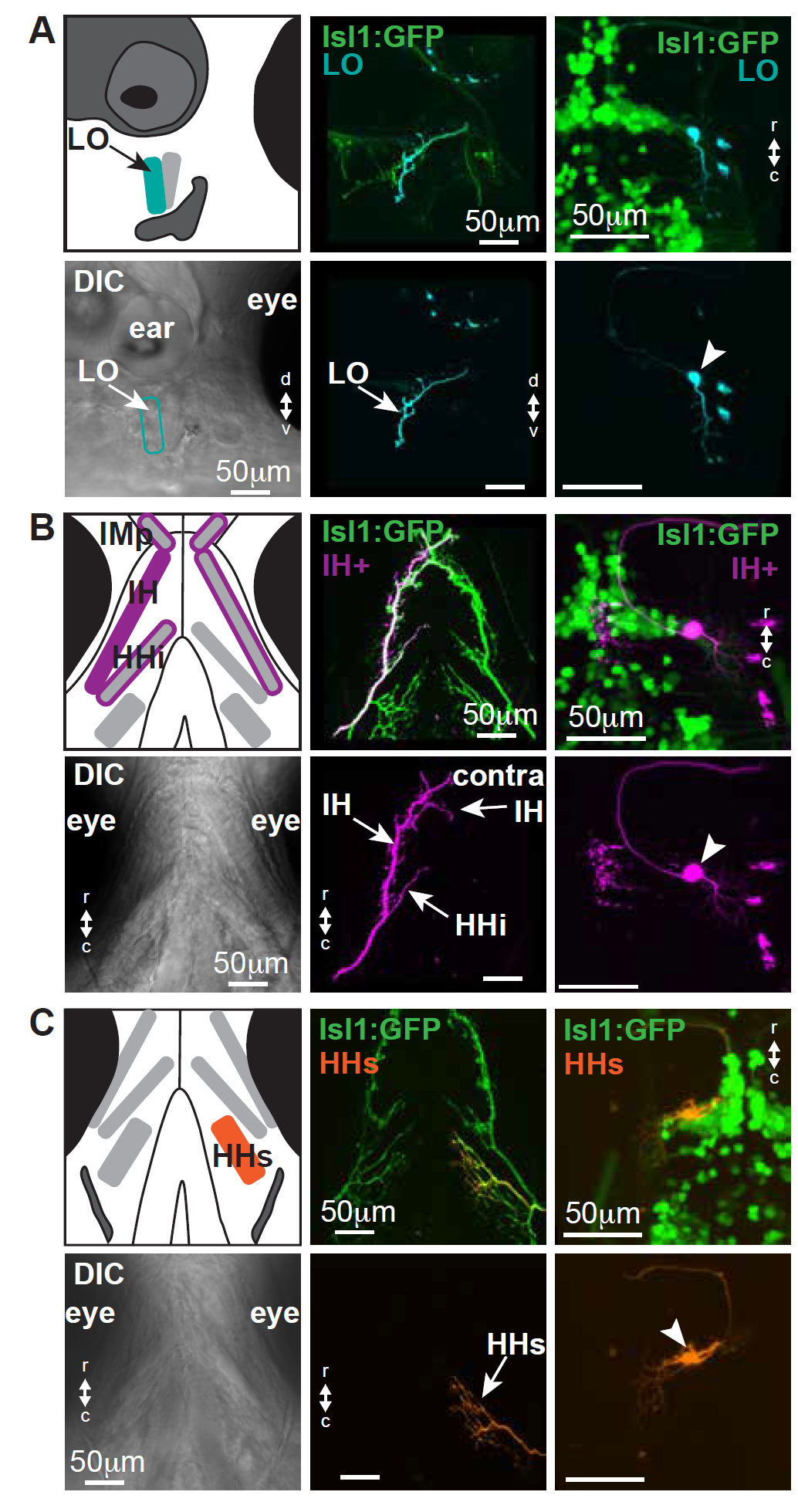Fig. S1
In zebrafish larvae, some facial motor neurons innervate a single muscle, while others innervate multiple muscles; see also Figures 1 and 2.
In each section (A-C), a schematic of the cranial musculature is shown in the upper left, with a corresponding DIC view in the lower left. The axon terminal from a single-cell is shown in the middle (upper and lower) panels, with the corresponding filled cell body shown in the right (upper and lower) panels. (A) Both backfills and single-cell fills are consistent with the existence of an LO-only facial motor pool. Electroporation targeting the LO facial nerve branch did not fill other nerve branches, and the axons of filled neurons projecting to the LO do not also terminate on other muscles. (B) Both backfills and single-cell fills are consistent with the existence of a multi-muscle motor pool innervating both ipsilateral and contralateral IH plus the ipsilateral HHi and the bilateral IMp (a muscle typically associated with trigeminal innervation). As shown here, a single facial motor neuron axon can terminate on all of these muscles. Some of these muscles will fuse later in development [S1]. (C) Both backfills and single-cell fills are consistent with the existence of an HHs-only facial motor pool, though this muscle will separate into two separate muscles later in development [S1]. Electroporation targeting the HHs facial nerve did not fill other nerve branches, and the axons of filled neurons projecting to the HHs do not typically terminate on other muscles. Rarely, a small branch might be seen to extend onto the IH, but these small branches were not elaborated and might not be functional. LO = levator operculi, IH = interhyoideus, HHi = hyohyoideus inferior, HHs = hyohyoideus superior, IMp = intermandibularis posterior.

